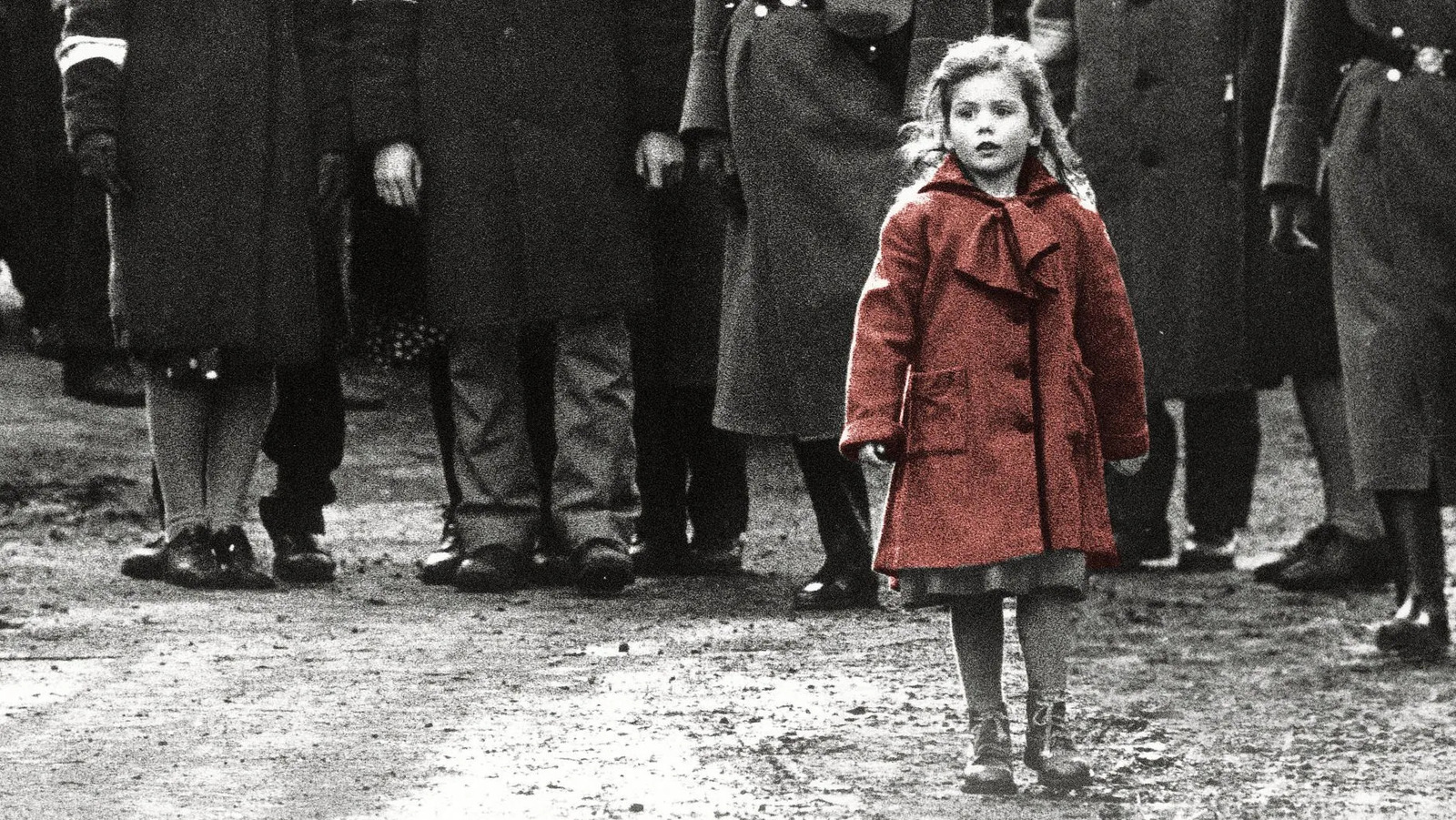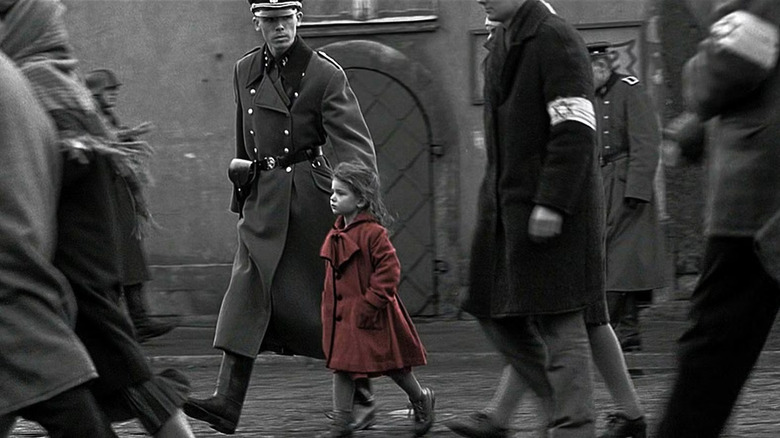Steven Spielberg’s magnum opus “Schindler’s List” is an unflinching depiction of the Holocaust’s atrocities, and there are many scenes that rattle you to the core. One of these is the liquidation of the Kraków ghetto, where SS officers tear through the Jewish men and women’s homes, toss their belongings off balconies, yank them onto the street, and line them up to shoot in a firing squad.
The scene is shot with a handheld camera, which mirrors Schindler’s wandering eye. We see everything from a distance as Oskar Schindler watches from a hilltop while on a horseback ride. The framing also reinforces his elevated station as a wealthy man and member of the Nazi party himself. Since Schindler observes from so far away and with such a wide scope, the Jewish men and women appear like dollhouse figures, giving their slaughter an uncanny detachment. From the shock and sadness on his face, we realize that Schindler is confronted with the disturbing reality of what is happening in his country for the first time.
Amid the chaos and carnage, a little girl wanders the cobblestone streets, surprisingly unnoticed by the Nazi soldiers. The camera zooms in to match Oskar Schindler’s narrowed focus on her. Her red coat is easy to spot because it stands out against the drab sea of black and white. A palpable, voyeuristic tension builds as she avoids the melee around her, and we fear that this small, innocent girl could be killed at any moment. The scene is deeply moving, but it also raises the question: why did Steven Spielberg choose the color red and this one character to stand out in an otherwise monochrome film?


